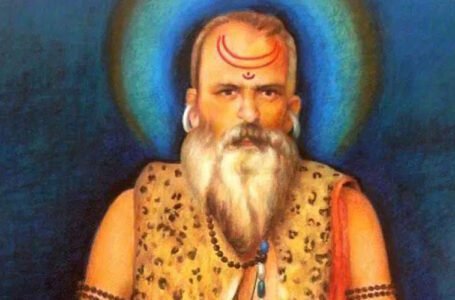From Kamandala to Kaveri: The Eternal Essence of Lopamudra
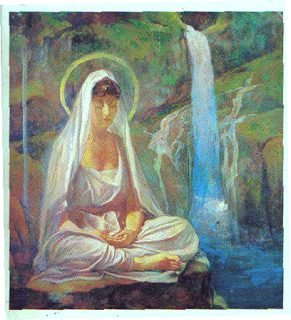
In the mystic realms of ancient Vedic India, a luminary figure graced the tapestry of philosophical wisdom—Lopamudra, also known as Kaveri, Kaushitaki, and Varaprada. She transcended the conventional roles of her time, not merely as the revered consort of the sage Agastya, but as a formidable philosopher in her own right. The echoes of her intellect resonate through the Rigveda, a sacred collection of hymns believed to span from 1950 BC to 1100 BC.
In the ethereal verses of the Rigveda, Lopamudra’s presence is felt as a sage and Rishiki, contributing profoundly to the spiritual fabric of the Srikul Shakta tradition in Hinduism. Her visionary insight birthed the “Hadi Panchadasi” mantra, a cherished gem in the tapestry of ancient wisdom. As one of the prominent Brahmavadinis, she exemplified a fusion of spiritual prowess and intellectual acumen.
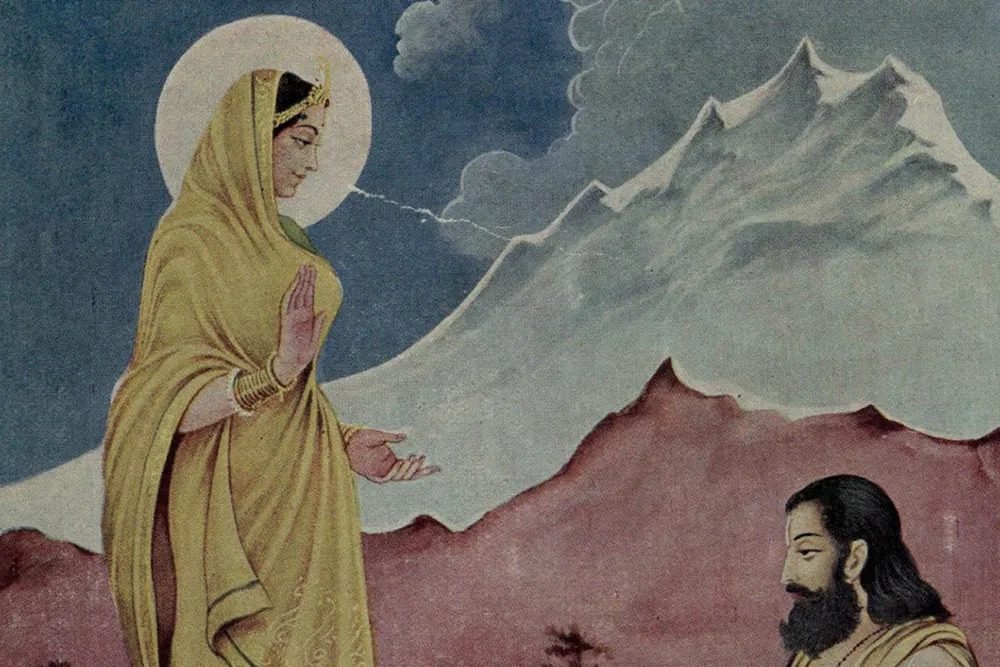
The legends surrounding Lopamudra unfold in multiple dimensions. Sadly,not much is known about her as an individual, with most reports glancing over her as an extension of her husband, Sage Agastya. In the Rigveda Hymns, her essence intertwines with the divine verses, portraying a captivating narrative of her profound connection with sage Agastya. The epic Mahabharata unveils an elaborate saga during the Vanaparva: Tirtha-yatra Parva, where the couple’s sacred journey unfolds, intricately woven with tales of penance at the hallowed Gangadwara (Haridwar).
A third version, found in the Giridhara Ramayana, adds another layer to the enigma of Lopamudra. It spins a unique narrative, detailing her creation by Agastya through the most graceful components of animals, such as the mesmerizing eyes of a deer.
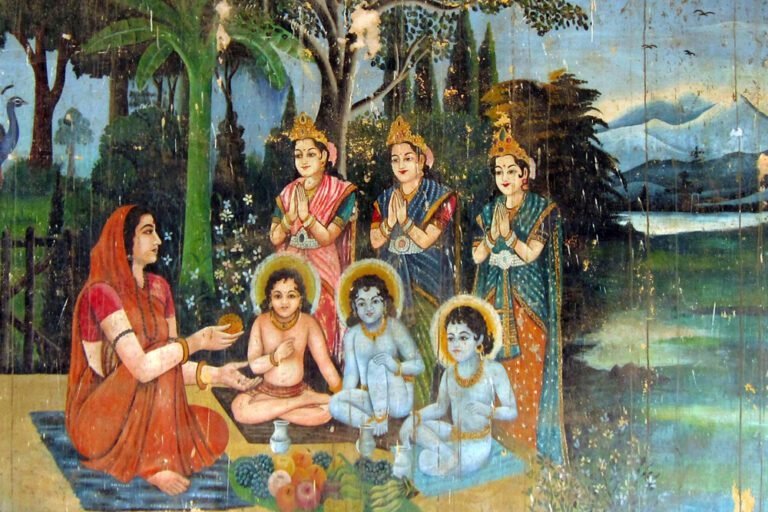
Lopamudra: Etymology and Personal Life
The name Lopamudra, derived from “lopa” meaning loss and “mudra” signifying the distinctive beauties, encapsulates the sacrifice of animals and plants in her creation by the sage Agastya. Gifted to the King of Vidarbha during his penance for progeny, Lopamudra was raised as his daughter. Agastya’s initial intention was to marry her, and when she matured, she acceded to his proposal, transitioning from royal abode to his ascetic hermitage.
Yet, the monotony of Agastya’s austerity wearied Lopamudra, prompting her to compose a hymn in the Rigveda. This heartfelt plea sought attention and love from her husband. The resonating verses served as a catalyst for Agastya’s realization of his marital duties. The union bore fruit in the form of their son Dridhasyu, who emerged as a gifted poet.
Together, Agastya and Lopamudra not only played a crucial role in spreading the fame of the Lalita Sahasranama, the thousand names of the Divine Mother, but also contributed to the Rigveda’s rich tapestry. Lopamudra’s hymns, particularly in verse 179, illuminate the dynamics of marital relationships and the pursuit of celibacy. Acknowledged as a “mantra drashta” (seer of mantras) alongside Agastya, she earned the title of “Mantradrika” in Rigveda, leaving an indelible mark on ancient Vedic literature.
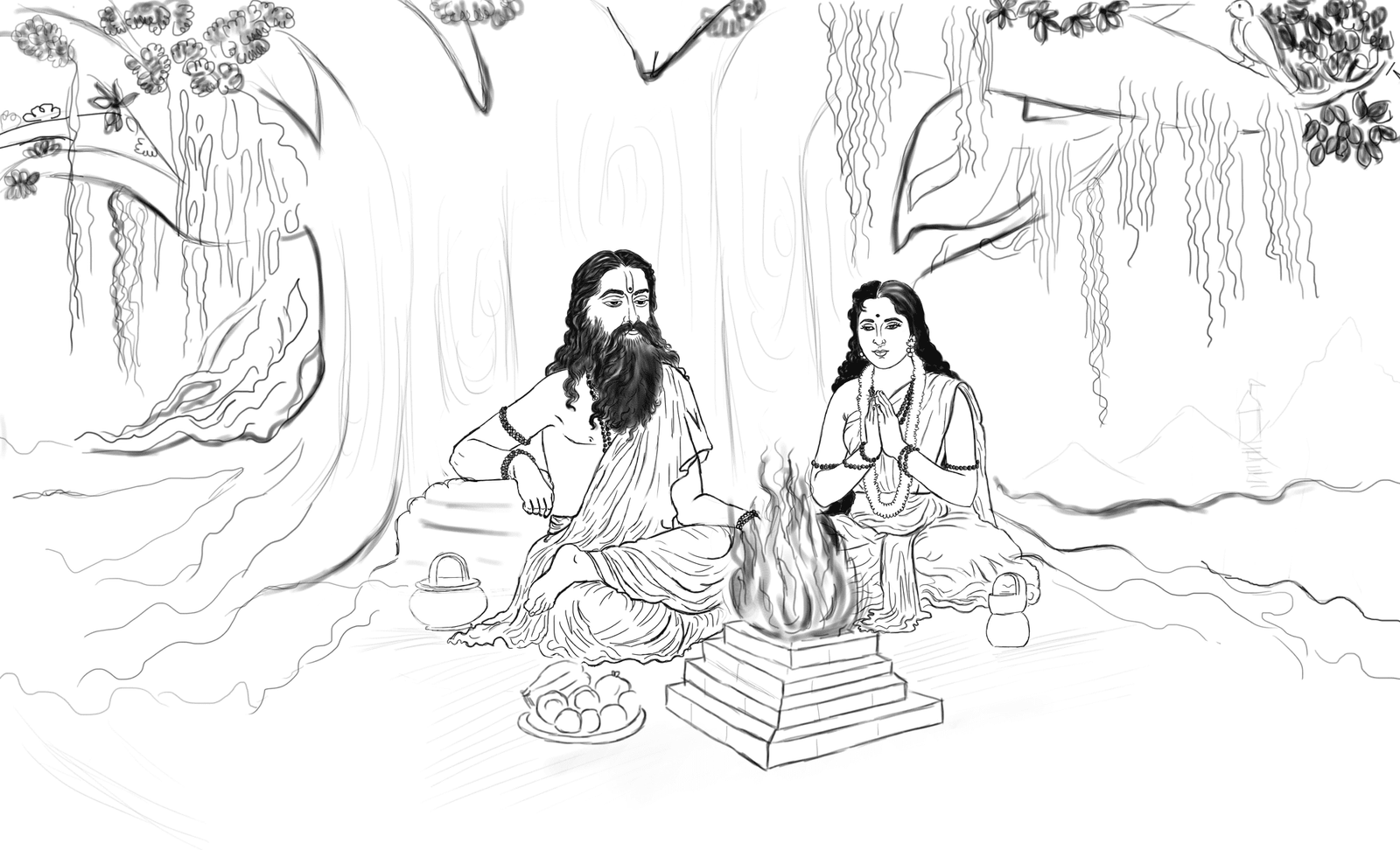
References in the Mahabharata:
In the tapestry of mythological tales, the legend of Lopamudra unfolds within the Aranyakaparvan of the epic Mahabharata,, illuminating the virtues of domestic life and family, while cautioning against the pitfalls of a life solely rooted in asceticism.
The tale’s origin traces back to the asura brothers Ilvala and Vatapi, hailing from the region of Manismati, and as some accounts suggest, from the sacred land of Badami in Karnataka, South India. Driven by a desire for a son as formidable as Indra, Ilvala’s discontent with the Brahmins led to vengeful magical tricks. Vatapi, assuming the guise of a buffalo, became the instrument of their revenge, a macabre dance where the cooked meat served to Brahmins would transform into a deadly trap, unraveling in the stomachs of those who partook. This malevolent duo’s actions, however, did not escape the notice of Agastya.
Intrigued by the anomaly, Agastya embarked on a celestial journey, encountering suspended manes with upturned legs over a gorge. These spectral beings revealed their plight—they awaited the birth of a descendant to break free from a curse. Identified as Agastya’s ancestors, they entrusted him with the duty to marry, beget a son, perform oblation rites, and liberate them from their spectral predicament. Agastya solemnly pledged to fulfill their wish, setting the stage for a cosmic unfolding.

In a different version, Agastya’s encounter with his ancestors manifested through a dream, wherein they appeared as suspended manes with heels up over a deep ravine. The surreal encounter set the foundation for a divine quest that would shape the destiny of Agastya and Lopamudra.
The Creator and the Created:
Driven by his commitment to fulfill the wishes of his ancestors, Agastya embarked on the creation of a woman of extraordinary beauty and intelligence. Drawing from the most graceful elements of various creatures—be it the eyes of the doe, the grace of the panther, the slenderness of palm trees, the fragrance of the champak flower, or the softness of a swan’s neck feather—he sculpted the ethereal Lopamudra. This creation, conceived from the loss of parts of creatures, was gifted to the childless king of Vidarbha, who had sought divine intervention for progeny.
As Lopamudra emerged into the world, radiant with beauty, the king, grateful for this divine blessing, summoned Brahmins to bless the newborn. The learned sages bestowed upon her the name “Lopamudra,” signifying the loss (‘lopa’) of parts (‘mudra’) from various creatures in her creation. Growing into a captivating and learned daughter, Lopamudra became the object of the king’s desire for marriage upon reaching puberty.
The legend of Lopamudra, thus, weaves a complex tapestry of divine intervention, sacrifice, and the interplay between the earthly and celestial realms. It stands as a testament to the intricate balance between ascetic pursuits and the fulfillment of familial duties, reminding us that even in the realm of myth, the completeness of life lies in harmonizing the sacred and the worldly.
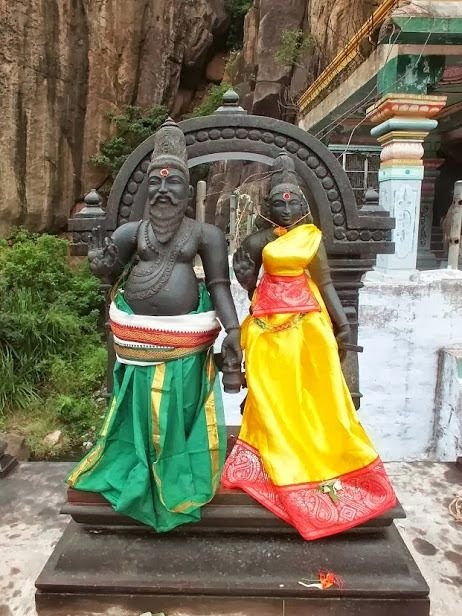
How Agastya and Lopamudra came to be:
The saga of Lopamudra unfolds as a captivating narrative, entwined with complexities of love, duty, and spiritual pursuits. The pivotal moment arises when the king, seeking Agastya’s counsel for his daughter’s marriage, faces an unexpected twist. Agastya, the sage responsible for Lopamudra’s exquisite creation, surprisingly expresses his desire to marry her. The royal couple grapples with the dilemma of bestowing their princely-raised daughter upon an ascetic, a dweller of the forest. Fueled by anxiety and a fear of Agastya’s potential curse, they reluctantly acquiesce to his unconventional request.
Witnessing her parents’ distress, Lopamudra, displaying a remarkable sense of agency, volunteers to marry Agastya. Her selfless commitment to her creator’s wishes sets the stage for a journey into the ascetic life. Upon marriage, Lopamudra, adorned in royal opulence, transitions to the ascetic realm, discarding her regal attire for rags, deer skins, and bark—a testament to her unwavering dedication and submission.
In the ascetic abode, Lopamudra embraces her role with dutiful reverence, willingly participating in Agastya’s religious practices and penance. Her asceticism matches Agastya’s, embodying a union of spiritual synergy. Despite her inherent beauty, Agastya remains detached, not succumbing to the allure of physical desires.
Time unfolds, and Agastya’s purpose evolves. Seeking to fulfill his promise to his ancestors and alleviate their curse, Agastya desires a son. However, Lopamudra, aware of her limited childbearing years, puts forth a condition—she will bear a child only if endowed with the riches and princely comforts she enjoyed in her father’s realm. A poignant dialogue ensues, as Agastya, torn between ascetic principles and familial obligations, hesitates to break the laws of asceticism. Lopamudra persistently argues that Agastya’s ascetic qualities can surmount any challenge, urging him to embark on a quest for wealth.
In an alternate rendition found in the Giridhara Ramayana, the story takes a different turn. Agastya, seeking a girl for marriage, approaches the king of Kanyakubja. The king, faced with a dilemma, disguises his son Lopamudra as a girl to avert a potential curse. Miraculously, Lopamudra transforms into a woman after the wedding, adding a touch of mystical enchantment to the tale.
Agastya, compelled by Lopamudra’s condition, embarks on a quest for wealth. Meeting three kings who couldn’t spare resources, he turns to Ilvala, the wealthy king of asuras. Hospitality veils treachery as Ilvala serves Agastya and his companions the magical meat of Vatapi, intending to slay them. Unfazed, Agastya consumes the meat, uttering “Vatapi Jeerno Bhava,” digesting Vatapi. Ilvala, conceding defeat, bestows upon Agastya the wealth he sought.
Returning to Lopamudra with newfound riches, Agastya’s power is demonstrated in both secular and sacred realms. With the acquired wealth, Agastya fulfills his promise to Lopamudra. They unite, and she conceives, giving birth to a son named Idhmavaha or Drdhasyu, a learned scholar well-versed in Vedas and Upanishads. Agastya’s ancestral rites are performed, breaking their curse and guiding them to heavenly realms.
The legend of Lopamudra, rich with layers of devotion, sacrifice, and the interplay of worldly and spiritual pursuits, reverberates through the ages, offering profound insights into the complexities of human existence. Laurie L. Patton’s observation underscores the nuanced portrayal of Lopamudra, her character serving as a conduit for Agastya’s pursuit of dharma. In this mythic tapestry, she emerges not merely as a wife but as a symbol of resilience, agency, and the transformative power of ascetic love.

Conclusion:
In the sacred tapestry of Hindu tantra, the Sri Vidya mantra, dedicated to the divine Devi, unfolds with twelve variations, each attributed to revered devotees. Among these devotees stands Lopamudra, a luminous figure in this spiritual tradition. This mantra, practiced in South India around the 6th century AD, is known as the Lopamudra mantra, reflecting the profound connection between the chant and its devotee. Associated with traditions in Kashmir, this mantra, though not widely practiced today, carries the resonance of ancient devotion.
The river Kaveri in Karnataka bears the name Lopamudra, echoing a mythical tale intertwined with the legendary sage Agastya. According to the folklore, Agastya had confined Lopamudra, whom he married for her unparalleled beauty, within his Kamandala or water pot. During Agastya’s prolonged absence, Lopamudra’s tears moved Ganesha, who overturned the vessel, allowing her to flow out as the river Kaveri. This mythological metamorphosis symbolizes the fluidity of divine energies and the interconnectedness of nature.
Another rendition narrates Lopamudra’s transformation into the river Kaveri through a marital condition set with Sage Agastya. Angered by Agastya’s extended absence during a discourse with his disciples, Lopamudra sternly warned that she would forsake him if he left for too long. In a fit of fury, she turned away, causing the pleats of her sari to rearrange. This unique way of draping the sari is observed by Kodava women. The legend continues with Lopamudra jumping into a divine tank atop the Brahmagiri hill, reincarnating as the revered river Kaveri. Flowing eastward and disappearing underground before resurfacing at Bhagamandala, the river became a symbol of divine love and endurance.
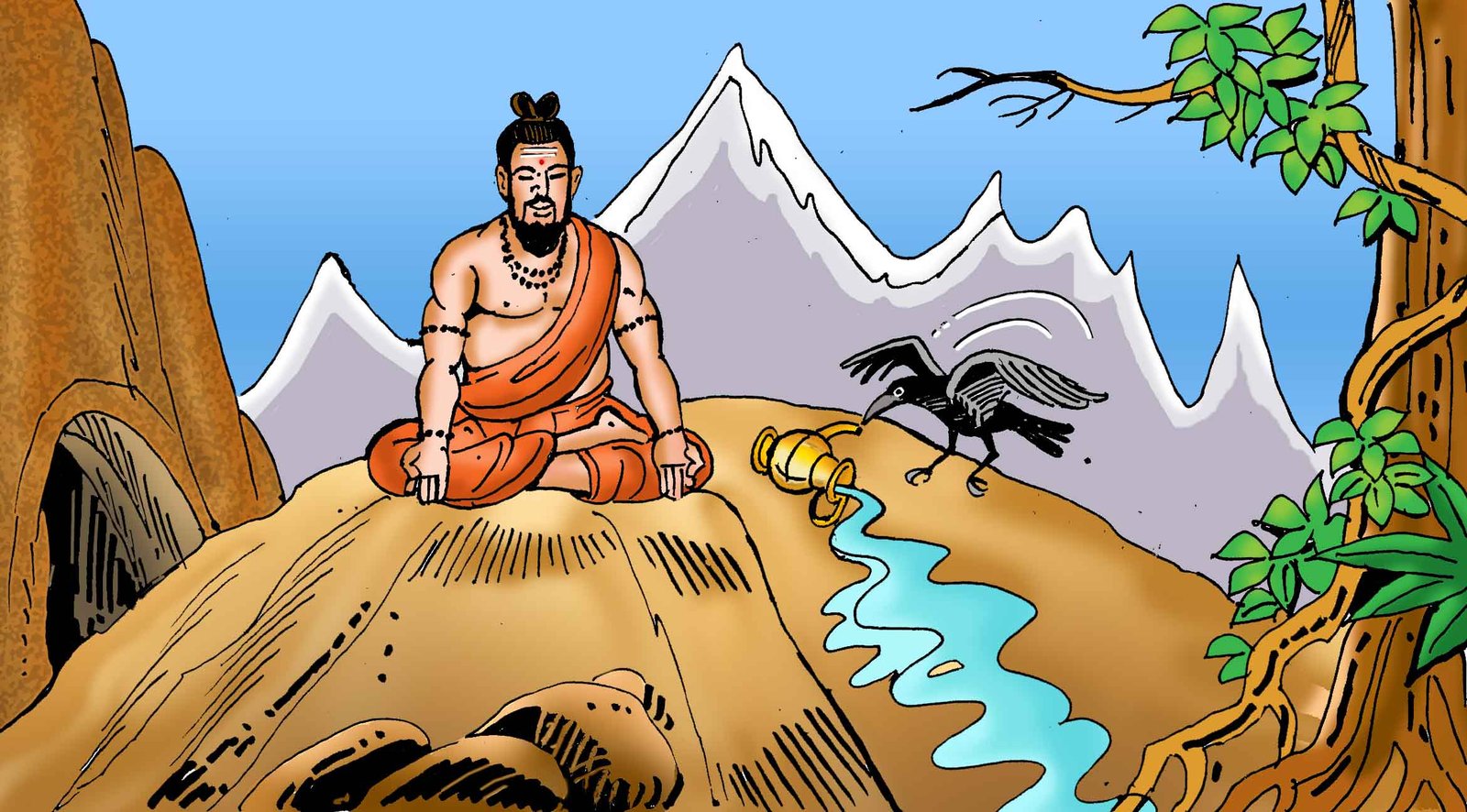
Goddess Kaveri holds special significance for deities such as Shiva, Vishnu, Lakshmi/Bhagavathy, and Parvati/Kali. The sacred shrines of Ranganatha (Vishnu) and Nimishambika (Parvati/Kali) at Srirangapatna, along the banks of the Kaveri, are revered by the people of Karnataka. Srirangam, considered a Divya Desam of Vishnu and Lakshmi in Tamil Nadu, stands as a testament to the divine presence along the course of the river Kaveri, embodying the rich spiritual heritage of this mythical narrative.
In the profound realms of Hindu mythology and spiritual traditions, Lopamudra emerges as a multifaceted and enduring figure. Her story, intricately woven into the tapestry of Vedic literature, tantra practices, and mythological narratives, transcends the boundaries of time and resonates with profound symbolism. As a devoted sage, wife, and participant in the sacred Sri Vidya mantra, Lopamudra exemplifies the intersection of spiritual devotion and earthly responsibilities.
Her tale, encapsulated in the legends of Agastya and the transformation into the sacred river Kaveri, reflects the dynamic interplay of love, sacrifice, and divine intervention. Whether confined within a sage’s water pot or flowing freely as a revered river, Lopamudra’s journey embodies the fluidity of existence and the interconnectedness of the natural and divine realms.
Lopamudra’s enduring presence in spiritual practices and regional folklore, such as the unique Kodava sari draping, underscores her timeless significance. She remains an embodiment of strength, resilience, and unwavering commitment—a beacon that guides seekers on the path of spiritual evolution. Through her various roles and transformations, Lopamudra stands as a testament to the rich tapestry of Hindu mythology, where the ordinary and the divine converge in a harmonious dance that transcends mortal constraints.


